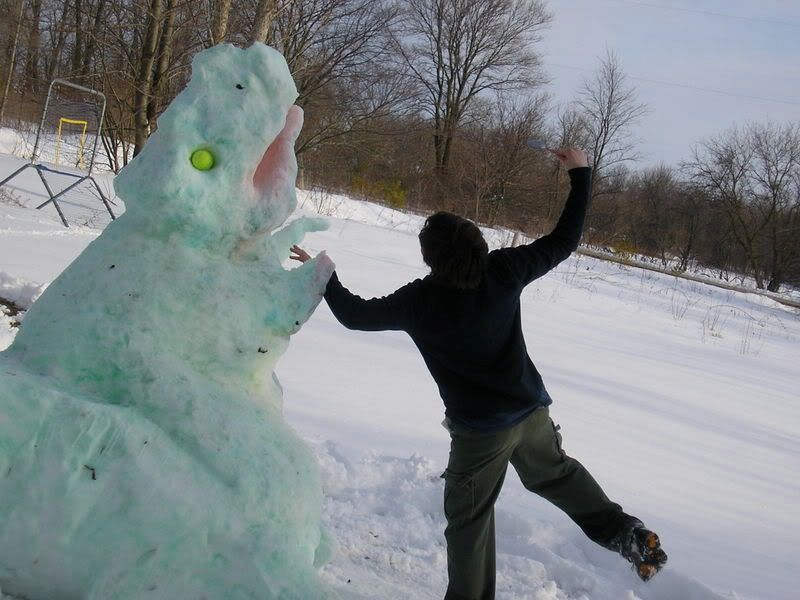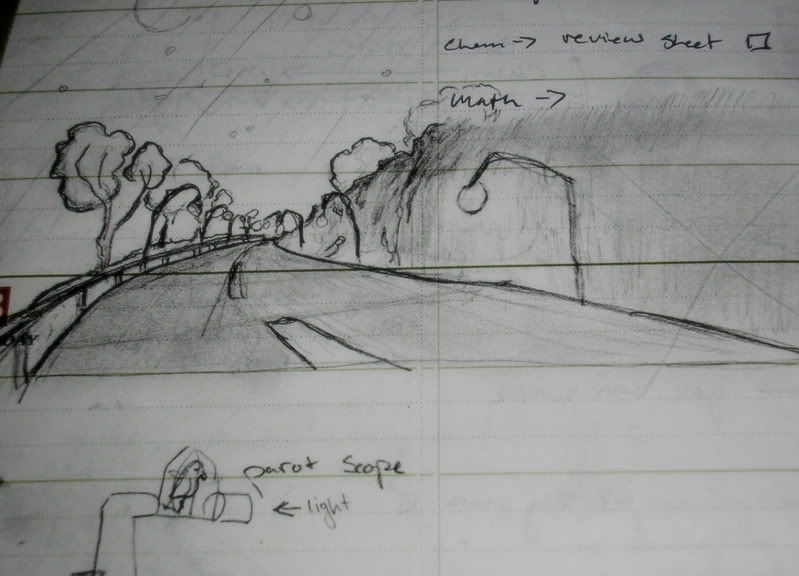A Wrinkle In Time: Madeleine L'Engle
Mrs. Watsit looked at Charles Wallace, and the creaky voice semed somehow both to soften and to deepen at the same time. "Charles Wallace, the danger here is greatest for you."
"Why?"
"Because of what you are you willl be by far the most vulnerable. You must stay with Meg and Calvin. You must not go off on your own. Beware of pride and arrogance, Charles, for they may betray you."
"...We do not know what this means to see."
"Well, it's what things look like," Meg said helplessly.
"We do not know what things look like, as you say" the beast said."We know what things are like. It must be a very limiting thing, this sight."
"Who helps you?" Meg asked.
"Oh, dear, it is so difficult to explain things to you, small one. And I know that it is not just because you are a child. The other two are as hard to reach into as you are. What can I tell you that will mean anything to you? Good helps us, the stars helps us, perhaps what you call light helps us, love helps us. Oh, my child, I cannot explain! This is something you just have to know or not know."
"But-"
"We look not at the things which are what you would call seen, but at the things which are not seen. For the things wich are seen are temporal. But the things which are not seen are eternal."
I was reminded today about waiting. I went to church today with Shane for the first time in what seems forever. It was a good thing. It felt like one of the first times I was at lifest. Things were said, and I listened. I need to remember to read over Acts. After one of the most monumental parts of the Christian time line, Jesus was risen, and his word to his disciples was simply "Wait. Just wait for a moment. I have so much more in store for you." I feel as if I have almost been physically jerked from a mentality I have been in. I don't know how to describe the level of mentality I have been on, but at least I feel more and more able to work, and do things.
Sunday, March 30, 2008
Friday, March 28, 2008
Wednesday, March 26, 2008
Spring..
I have realized that I do not read as much as I used to. This should probably be changed. A list should be made of "favorite" books that have not been read more than several times, or have potential of being taken more deeply, or better respected in my now. "A Wrinkle in Time" seemed a good place to begin.
Become.
Be.
Prepare.
Live.
Am.
Saturday, March 22, 2008
Oedipus Saurus Rex
Wednesday, March 19, 2008
Sunday, March 9, 2008
Prospection
(drafted 3/09 )
Future (or depending on time, present) Sam
A kind of thought that got thrown to me from a book, and that is the idea that humans are very probably the only animals that cognitively plan, and imagine the future. That being as it is, it would appear that our present self is in a constant mode of preparation so that our future self, when it comes into the present, will have a more enjoyable time than how we are currently functioning, or so that it might also function in a similarly enjoyable environment. An example may be having our present self slave over hours and hours of homework so that eventually, come that future weekend, we might be able to do what a scheduled series of fun-a-ties. I am not entirely sure how to take this. Am I forever a slave to menial tasks in hope of bringing about an intangible, more enjoyable future? or can this futuristic environment be brought to the present. does this limbo exist in only past and future, but is not compatible with the present?
(edited 5/13/08)
I am sorry.
I tried my best.
...
It's not your fault.
your Past,
Sam
Future (or depending on time, present) Sam
A kind of thought that got thrown to me from a book, and that is the idea that humans are very probably the only animals that cognitively plan, and imagine the future. That being as it is, it would appear that our present self is in a constant mode of preparation so that our future self, when it comes into the present, will have a more enjoyable time than how we are currently functioning, or so that it might also function in a similarly enjoyable environment. An example may be having our present self slave over hours and hours of homework so that eventually, come that future weekend, we might be able to do what a scheduled series of fun-a-ties. I am not entirely sure how to take this. Am I forever a slave to menial tasks in hope of bringing about an intangible, more enjoyable future? or can this futuristic environment be brought to the present. does this limbo exist in only past and future, but is not compatible with the present?
(edited 5/13/08)
I am sorry.
I tried my best.
...
It's not your fault.
your Past,
Sam
Saturday, March 8, 2008
Thursday, March 6, 2008
A Good Explanation
Sound → color synesthesia
In sound → color synesthesia, individuals experience colors in response to tones or other aspects of sounds. Simon Baron-Cohen and his colleagues break this type of synesthesia into two categories, which they call "narrow band" and "broad band" sound → color synesthesia. In narrow band sound → color synesthesia (often called music → color synesthesia), musical stimuli (e.g., timbre or key) will elicit specific color experiences, such that a particular note will always elicit red, or harps will always elicit the experience of seeing a golden color. In broadband sound → color synesthesia, on the other hand, a variety of environmental sounds, like an alarm clock or a door closing, may also elicit visual experiences.
Color changes in response to different aspects of sound stimuli may involve more than just the hue of the color. Any dimension of color experience (see HSL color space) can vary. Brightness (the amount of white in a color; as brightness is removed from red, for example, it fades into a brown and finally to black), saturation (the intensity of the color; fire engine red and medium blue are highly saturated, while grays, white, and black are all unsaturated), and hue may all be affected to varying degrees (Campen & Froger 2003). Additionally, music → color synesthetes, unlike grapheme → color synesthetes, often report that the colors move, or stream into and out of their field of view.
Like grapheme → color synesthesia, there is rarely agreement amongst music → color synesthetes that a given tone will be a certain color. However, when larger samples are studied, consistent trends can be found, such that higher pitched notes are experienced as being more brightly colored (Ward, Huckstep & Tsakanikos 2006). The presence of similar patterns of pitch-brightness matching in non-synesthetic subjects suggests that this form of synesthesia shares mechanisms with non-synesthetes (Ward, Huckstep & Tsakanikos 2006).
(music to be added later)
In sound → color synesthesia, individuals experience colors in response to tones or other aspects of sounds. Simon Baron-Cohen and his colleagues break this type of synesthesia into two categories, which they call "narrow band" and "broad band" sound → color synesthesia. In narrow band sound → color synesthesia (often called music → color synesthesia), musical stimuli (e.g., timbre or key) will elicit specific color experiences, such that a particular note will always elicit red, or harps will always elicit the experience of seeing a golden color. In broadband sound → color synesthesia, on the other hand, a variety of environmental sounds, like an alarm clock or a door closing, may also elicit visual experiences.
Color changes in response to different aspects of sound stimuli may involve more than just the hue of the color. Any dimension of color experience (see HSL color space) can vary. Brightness (the amount of white in a color; as brightness is removed from red, for example, it fades into a brown and finally to black), saturation (the intensity of the color; fire engine red and medium blue are highly saturated, while grays, white, and black are all unsaturated), and hue may all be affected to varying degrees (Campen & Froger 2003). Additionally, music → color synesthetes, unlike grapheme → color synesthetes, often report that the colors move, or stream into and out of their field of view.
Like grapheme → color synesthesia, there is rarely agreement amongst music → color synesthetes that a given tone will be a certain color. However, when larger samples are studied, consistent trends can be found, such that higher pitched notes are experienced as being more brightly colored (Ward, Huckstep & Tsakanikos 2006). The presence of similar patterns of pitch-brightness matching in non-synesthetic subjects suggests that this form of synesthesia shares mechanisms with non-synesthetes (Ward, Huckstep & Tsakanikos 2006).
(music to be added later)
Subscribe to:
Comments (Atom)









